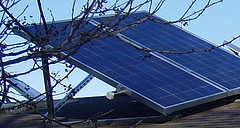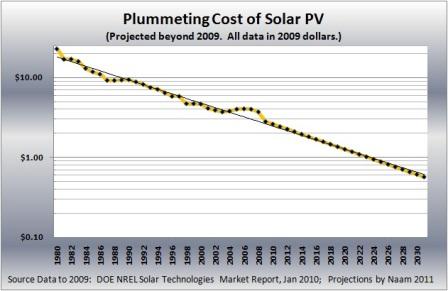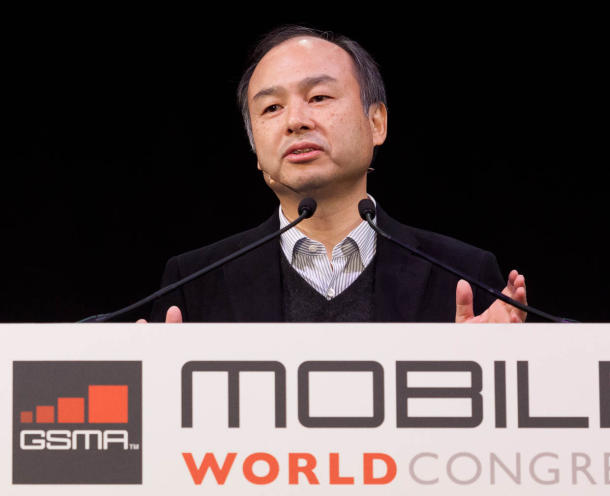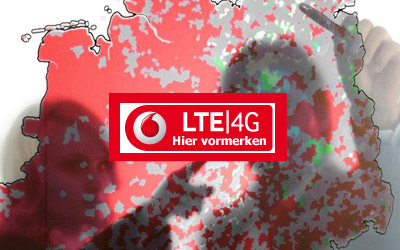Moore’s law continues to drive solar costs down and installations up. According to SEIA, U.S. Market Installs 3,300 Megawatts in 2012; Driven by Record Fourth Quarter,
2012 was a historic year for the U.S. solar industry. There were 3,313 megawatts (MW) of photovoltaic (PV) capacity installed throughout the year, which represents 76% growth over 2011’s record deployment totals. The fourth quarter of 2012 was also the largest quarter on record as 1,300 MW came online, driven in part by unprecedented installation levels in the residential and utility markets. SEIA and GTM Research forecast that the market will continue to grow at a steady clip with over 4,200 MW of PV and 940 MW of concentrating solar power (CSP) expected to come online in 2013. (All data from SEIA/GTM Research “U.S. Solar Market Insight 2012 Year-In-Review” unless otherwise noted.)
And those new installations are driven by solar PV prices continually falling in Moore’s Law for solar:
Continue reading











